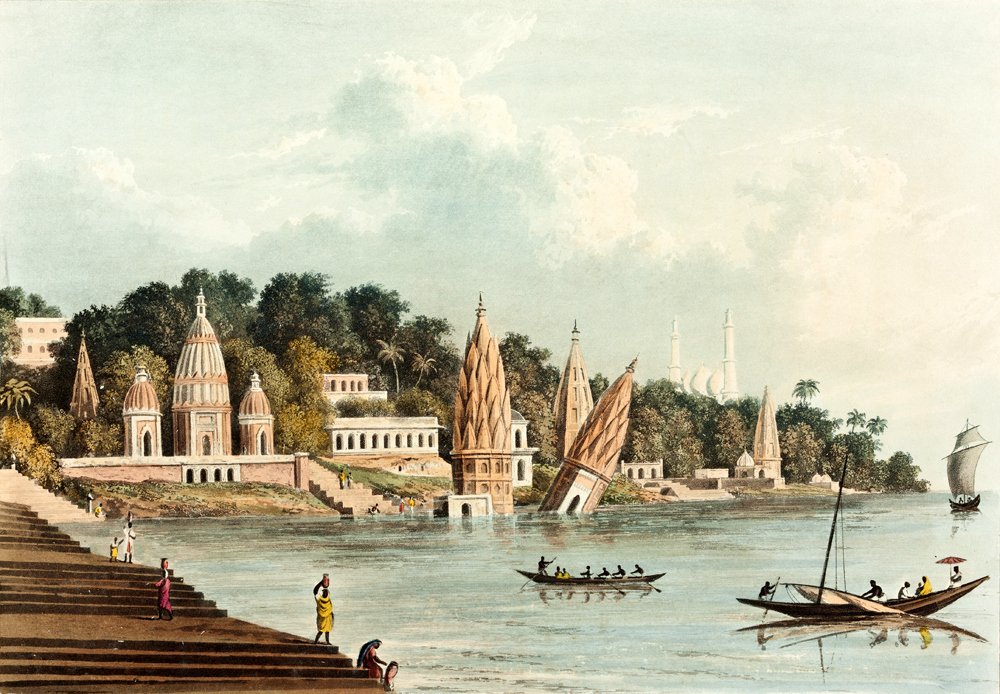
India From the British Perspective
When the British East India Company began its explorations in India, the subcontinent captured the attention and the imagination of the people back home. Merchants, soldiers, artists, and travelers, lured by the promise of riches and adventures, wrote numerous stories and articles of their encounters on the subcontinent. A selection of some of these fascinating accounts are the subject of the exhibit "Conjuring India: British Views of the Subcontinent, 1780-1870." The exhibit is located at UC Santa Barbara's Davidson Library, Special Collections, Third Floor.
Done in the form of books and illustrations that come from the university's collections and that of philanthropist and UCSB supporter Sara Miller McCune, the exhibit gives its visitors a window into the diverse attitudes toward and perspectives on India, beginning with the late 18th century, as the British East India Company sought to increase its holdings and standing on the world stage, and ending with the age of imperialism, when India had acquired the status of the jewel in the crown of the British empire.
"We have all these myriad views, piecing together what it means to constitute India," said Mira Rai Waits, UCSB doctoral candidate charged with the curation of the exhibit. One view comes from a military official, another from a philosopher, while yet another gives an ordinary woman's perspective on a land completely foreign to the people who came to colonize it.
The illustrations, and later the accompanying texts, were made largely by amateurs, people who saw India as a land of opportunity, said Swati Chattopadhyay, professor in the university's Department of History of Art and Architecture. These publications –– part travelogue, part journal, part sales pitch –– were meant to inform people back home, as well as entice would-be investors and participants in the projects of the East India Company, a conglomeration of merchants that became a driving economic, political, and social force in the organization of the British empire in India. While some of these would become instant classics as authoritative historical works, others functioned as the coffee-table books of their time, with fanciful observations on various aspects of Indian life, such as descriptions of domestic scenes, the caste system, clothing, religion, and architecture.
"‘Conjuring' has both this aspect of making something up, but also invoking the otherworldly, the magical," said Chattopadhyay, on the choice of language for the title of the exhibit. Later European visitors used these works as "guides" to the subcontinent, and it is through repeated use that these depictions, filtered through a personal lens, gained the authority of the "real."
More than just an aggregation of print and illustration of a unique time in world history, the collection also reflects the evolution of the British view of itself, and the world outside the confines of its European boundaries. The publications show views of India merged with British frames of reference of the time, such as pastoral landscapes, or a fetish for ruins, demonstrating the vantages through which India was seen through
European eyes. In the beginning, said Chattopadhyay, geographical accounts of India were necessarily first person, but as the British empire in India expanded and imperial power became more assured, some of the producers of these works could claim authority without ever having set foot in the subcontinent.
The exhibit, which contains books that will be gifted to the library through Miller-McCune's estate plans, will be on display until December 15. On October 15, the Davidson Library will host a free public event around the exhibit, with a lecture by Chattopadhyay.
† Bottom image: Doctoral candidate Mira Rai Waits, left, and Swati Chattopadhyay, professor in the Department of Art and Architecture, curated the exhibit. Behind them is a painting of the iconic Taj Mahal by Colin Campbell Cooper
Related Links



